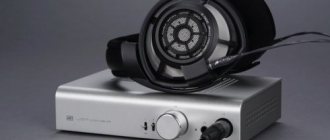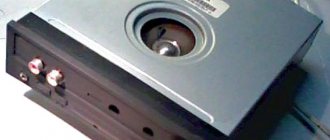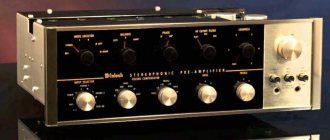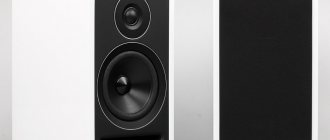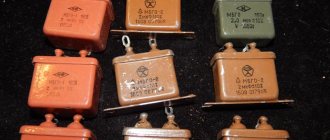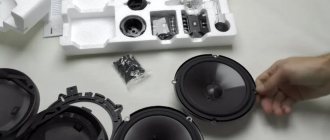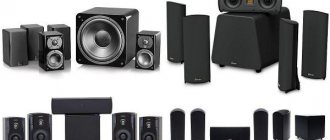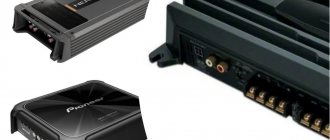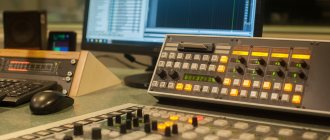Looking for vintage speakers
We bring to your attention the continuation of the saga from ANALOGSOUND about the crusade in search of high-quality sound. This time we look at vintage speaker systems.
A crusade through modern Hi-Fi/Hi-End salons in search of real sound.
This article is devoted to the choice of a vintage acoustic system (AS). I'll tell you about my journey in finding good sound for reasonable money. I will give prices at the time of purchase, so they may differ from today’s prices, but not critically.
I will write my impressions, so they are, of course, subjective. Sound is a generally subjective concept, but I will try to convey as accurately as possible the picture of what I heard.
I started my search with the desire to choose a brand, but spend a small amount.
I already understood that my first attempts would only give me experience and impressions, but would not achieve my goal. Although I entertained the hope of getting it right the first time.
I bought
Canton Karat 300 for 16,000 rub.
The choice was determined by the desire to purchase the Closed Box type, since my previous Dali ASX5000 speakers, purchased about 15 years ago, hummed no matter how you installed them.
Canton Karat 300 - 3-way speakers, large bookshelf speakers, 1986 - 1987, Germany, weight 13.8 kg.
They cost 1300 DM at the time of release.
Interesting one-piece body.
The first impression from listening is a bright sound, details, but you begin to catch yourself thinking that there is a discrepancy, some imbalance of the low frequencies with other frequencies, as if the drummer is late. I had similar impressions from modern KEF speakers, also of the Closed Box type. As a result, the sound becomes tiresome. He is precise, there is no embellishment in the instruments, but there is also no involvement in the composition, a somewhat cold presentation.
Simplified presentation, I wanted more.
Considering the price, there is no point in criticizing their sound; they can easily outperform modern speakers that are many times more expensive.
The only negative thing that came into my mind was, don’t all speakers with a Closed Box have some kind of imbalance?
Let's start choosing next. Let's go to Japan.
The principle of choice is simple, heavy means good. The first thing I decided to buy was DIATONE, despite the fact that on many forums this brand is not criticized, except by a very lazy person. But there are also forums for fans of this brand.
The search was based solely on excellent cosmetic and technical condition.
Such speakers were found - not a single scratch. The Japanese even kept the original packaging.
DIATONE DS-501 purchase price 38,000 rub.
Decent weight - 26kg each column. The price at the time of release of 82g was 164,000 yen, which is very decent for those years.
Their level can be compared with DIATONE DS-1000, which replaced this 500 series a year later.
Let's listen. These are the first speakers that made a strong impression.
Very accurate sound transmission, as accurate as possible, the piano and we hear all the details of the piano, the string of the guitar - all the vibrations - like a finger moving on a string and it sounds exactly as I heard it live.
The speed of the bass and here is the joy - there are no discrepancies, no imbalance - everything is in a single musical synergy. And this is the Closed Box again.
They play heavy metal easily.
The midrange is a little forward, but we can also see how big the dome is on the speaker.
There is no fatigue from listening to them. After listening for a while, you begin to understand what the expression “the sound is flat, there is no depth of stage” means.
But it is the depth of the air that can transport us to the concert where all this is happening. I want more.
The effect of presence is no longer enough. Luxman L-308 amplifier did not help us with this , which later revealed itself even more with its Low Bass, which does not add low frequencies, but rather expands space and creates depth. But it didn't help with DIATONE. Looking ahead, I will say that this description of sound delivery is characteristic of DIATONE starting from the most common 77 series and above.
I already had a Diatone DS-77Z and 66Z on the way. The suspension on the woofer is impregnated fabric.
If you get speakers with suspensions that are impregnated from time to time, then they will be quite elastic and eternal, if the suspension is already, as they say, hardened, but intact, special impregnating compounds are brought from Japan and soaking them will add bass, but apparently the depth of the stage not provided. But for that kind of money, accuracy, speed and beauty must be appreciated. You can’t get anything similar from modern speakers for 100tr more, you won’t get the same detail and accuracy as in these speakers.
We get
DIATONE DS-77Z price 32000 rub.
We have an absolutely impressive weight - 29 kg each speaker. In 1989 their cost was 120,000 yen. We expect new impressions from new technologies compared to 501.
For the magnetic circuit, the design developed in 1987 was adopted. and the ADMC (Advanced magnet circuit) system used in the top-end acoustics DS-V9000. Its meaning was to create a form of magnetic gap in which the magnetic field induced by the sound signal in the coil, summed with the magnetic field of the permanent magnet, would create minimal nonlinear distortions when the diffuser moves. The honeycomb diaphragm has also been redesigned. A composite of FRP material and organic polyamide was used. Just a question: “Why have they become a little cheaper compared to the 501s, but heavier?”
We expect benefits.
And in terms of sound we have exactly the same picture as with the DS-501 - small changes are directly proportional to the price, and not to the weight.
A little cheaper, just a little simpler. Vocals and midrange are not as prominent as in the 501, details are not as pronounced, but this is a direct comparison. So it’s not worth putting them at a lower level, there is a difference, but it’s insignificant. Everything is just as precise and detailed.
We still have a rather flat sound, but mature, beautiful, conveying all the colors of the music.
They are absolutely not critical of the location, there is no buzzing whatsoever, the bass is juicy and elastic.
The conclusion is the same - for that kind of money we have accurate sound with its correct transmission. In this price category, you can experiment with vintage ones, but modern speakers have no chance.
Modern speakers with such sound are in a completely different price category.
Next was the question:
“Is it possible to spend less and get sound that is not inferior to DIATONE DS-77Z?”
Let's listen
DIATONE DS-66Z price 20000r.
We have less weight compared to older models - 20 kg, and a smaller size.
Price at the time of release in 1990 - 92,000 yen.
The same technologies are used as in the older 77Z model.
We want to get 77Z level sound, we expect that they are just for a smaller room size. The speakers are just as beautiful. Arrived from Japan in excellent condition.
We turn it on - the sound is much inferior to its older brothers. The use of the same proprietary technologies of those years does not help either.
A frank step back that is clearly audible.
The impression of the droning boxes is after the impressions received from older brothers and from modern speakers whose cost is 10 times higher than these 66Zs.
After some research on vintage speakers on the Internet, we buy them from Japan on occasion.
Pioneer CS-E700 price RUR 38,000
Released in 1974, price at the time of release - 83,600 yen, weight 16 kg per speaker.
Initially, I didn’t expect to get something interesting; I wanted to satisfy my curiosity from the “read” technologies.
Doubts were raised by the unimpressive weight and the price at the time of release was not that great, but the fact that these speakers are sold in Japan more expensive than DIATONE DS-77 and similar ones was of interest. And to find them now in decent condition is already a rarity. Pioneer CS-E700 AC used FB speakers (cobalt?) + GB system. Mid-frequency and low-frequency emitters are made of paper with the addition of sheep wool, on a silk suspension. Our children will still listen to them in such a performance, if they are not damaged mechanically. In Japan, there are two types of this speaker - with and without the FB symbol on the diffusers. They differ in the number of screws securing the woofer, different attenuators, different back wall material and different mounting of grills. I read somewhere that there was an option on cobalt, there was one on ferrite, but the information is not accurate. Perhaps it's just a different year of manufacture. I had both pairs of speakers at the same time, compared them directly, one character, one sound, and the material of the body as a whole, diffusers and suspensions was the same. In Japan they are also sold and have the same price. Apparently at that time it was in demand that these speakers could be connected to three amplifiers (multiamp) at once. By amplifier for tweeter, midrange and woofer. A standard connection to one amplifier is also implemented. First listen - I can’t believe my ears. The sound has a deep stage and is spacious. Exactly what I wanted to hear.
At the same time, the middle is very detailed. String instruments even have velvet, slightly embellished.
Listening to the saxophone is more enjoyable than listening to it live on the street. The bass is very elastic, everything is heard clearly, the vibration of the bass string and the drum - everything merges into one beautiful music.
The drum beats as if on stretched skin, everything is correct and beautiful.
If the speakers embellish something, then this is a plus - they emphasize the beauty of the saxophone, keyboards, vocals - you will be heard.
Almost any composition can be listened to in one breath. Very musical speakers.
Looking ahead, I will say that there is a small drawback, but this is in comparison with speakers from a higher class - the stage is not so transparent.
BUT SHE IS.
Perhaps this is also caused by the inability to connect decent speaker cables - apparently at that time the manufacturer did not bother about this yet - the terminals have too thin holes.
When experimenting with other speakers and speaker wires, different results were seen and heard - this was surprising, because before I did not believe in such a meaning of wires. So, you can still experiment with these speakers by replacing the original connectors with decent ones and using a good speaker wire comparable to the price of the speaker itself. Then, I think, it will be possible to get a more transparent scene.
In any case, the Pioneer CS-700 are very musical speakers with a spacious stage, with a strong bias towards jazz, blues, and vocals. The sound is somewhat harsh in the treble, but warm and sweet overall.
The speakers have good sensitivity - 93.5 dB, which apparently has not been lost much over the years, and they easily play with a low-power tube amplifier.
From my impressions, modern speakers costing over 200,000 rubles did not give me the same emotions as these Pioneer CS-700.
Due to the positive impressions of the Pioneer CS-700, I became interested in Pioneer products from higher price categories.
In the vastness of our secondary market, I purchased
Pioneer CS-3000A price 50,000 rub.
1973 release. Weight 33kg each. Price at the time of release: 216,000 yen.
The combination of these factors led to attention to these speakers. But this experience turned out to be the son of difficult mistakes. Not all models can survive to this day in pristine condition. I came across this copy in a sad state, although it was sold as “excellent”, so it is difficult to judge the sound quality of this model. The expected quality sound was not there.
Either this design could not survive to this day or it was already with an incomprehensible repair, so it is not right to scold this model, but I gained experience, it cost me 20,000 rubles, with such a disadvantage I had to get rid of this pair.
In the review, this model is placed as an example of the fact that not all copies can survive to this day in the version - listen and enjoy.
Based on this experience, I am still wary of many interesting models in Japan, the same Onkyo produced many interesting and beautiful models, but they have a PPU suspension and it has a certain service life. On sale, a Japanese person may indicate that a replacement has been made, but you won’t be able to get information about the original or something universal, so for now we’ll treat many models with caution.
After Japan, we remember the classics of ENGLISH SOUND. We are not buying a completely vintage one, rather a remake, but from an early one, which was produced about 10 years ago and was assembled in England, and not like everything new, in China. In the vastness of our market there are these speakers with a price of 45,000-55,000 rubles, but all of the ones we looked at have speaker defects, all kinds of bumps and dents, but we are only interested in very good condition.
B&W DM604 S3 price 80,000 rub.
Weight - almost 30 kg each speaker. Very impressive size. The condition was impeccable. Original packaging, no scratches.
Sound.
I liked the well-developed in all aspects, very detailed sound of the model of this British brand.
Detailed sound.
The lower register of this speaker is magnificent. She basses deeply, dynamically, cleanly. It is necessary to separately note the depth and very low bass. The acoustics convey timbre colors with natural, lively plasticity, always reliably. The music scene is large and very deep. The British couple have an excellent dynamic resource in their arsenal. The always meaningful, surround sound of the British will be appreciated by many. This model has nothing in common with the modern 600 series. The sound is open, deep and has very tight and low bass. For this we will forgive her for her small peculiarity - the vocals are relegated to the back of the stage, although you expect to hear them in the foreground. Overall, this did not spoil the positive impressions. The speakers are very suitable for stereo, but I haven’t seen a single decent pair of these speakers on sale in a year. Good couple.
By this time, I had already purchased a speaker from the LEGENDARY series from TECHNICS
Technics SB-501 price 48000r
Weight 19 kg, low price at the time of release - 80,000 yen in 1973.
The purchase was due to various reviews, where the reference TECHNICS SB-1000 is always used as a sample.
The problem of deep and, at the same time, clean, structured bass is perhaps one of the most serious problems in sound reproduction in general. For the simple reason that at frequencies from 300 Hz and below, the influence of the room in which the listening is taking place is so great that it often “blocks” the sound of the speakers themselves. One of the solutions is to look for acoustics that are designed in such a way that serious jaggedness in the low frequencies can be avoided not by external interference or painful dragging around the room, but due to some “innate” design features of the speakers. There are extremely few acoustic systems of this class, but they nevertheless exist. The figure below is a starting point, so to speak.
Here is her measurement chart.
So the measurements and reviews of the younger SB-501 were just as impressive. We see the thick walls of the case and the overall shape from its older brother - this puts us in a positive mood.
In Japan, finding these speakers in decent condition is neither easy nor cheap. And I’m already accustomed to dense and low bass, which, despite all this, remains detailed and accurate. There was hope to find this in this 501 model.
SB-501 measurement chart.
It was assumed that the Technics SB-501 acoustics were only slightly inferior to the Technics 1000 and the hopes were justified.
We turn it on and feel the joy - the bottom is really dense and low.
Amazing depth. The stage has a shape. Nothing sticks out, everything is in its place. After listening to the Pioneer CS-E700, the first impression is that the vocals and many instruments are somewhat moved away, as is the case with the BW 604s3, but no - while listening, you begin to clearly see how all the performers are in their places.
Let's put on Barry White, here he is - his inimitable voice. In the foreground.
Herb Alpert, the saxophone comes in, it's beautiful and on point. It is not decorated and not highlighted as much as the Pioneer CS-E700 did, but the 501s left everything in place, all the colors of sounds, nothing dominates or intertwines. Bass string is precise, vibration, finger movement. Structurally, an eternal paper diffuser, a very elastic rubber suspension - apparently it has its own composition, but after so many years I have been calmly pulling it and it easily gives in and has not become stiff. I really liked the speakers for their depth of sound and low, dense bass.
While listening to modern speakers up to 300tr, I still couldn’t find anything similar.
I was more interested in Technics as a company. After reading the Internet, I noticed an interesting and inexpensive model
Technics SB-6 price 26000 rub.
Weight 16kg. Bass reflex type. Price in 1981 - 90,000 yen. Large shelves. I was interested in the interesting design of the speaker. The acoustics are built on flat honeycomb diffusers. LF-25 cm, MF-8 cm, HF-2.8 cm. Impedance - 8 Ohms, sensitivity - 93dB, power - 75W.
The sound is transparent, clean, the bass is dense and articulate. Sings with any amplifier from 50 W per channel. The clarity of the sound is something from high-quality studio monitors. Sharpness in sound! Everything is accurate, distinct, transparent, loud... sharp... The picture is smooth without distortions or obvious embellishments in frequencies. Such cheerful brightness and liveliness in tones... I want to listen and listen...
Separately, it is necessary to say about the elasticity and speed of the bass: the low end is super-fast and super-clean in Japanese style. No overtones. The bass guitar string plays hard and bright. Of course, it is necessary to make a discount on the requirements for these speakers, given their low price.
After the 501 model, there is no that low-deep bass, but in general there is bass and it is fast, easily playing heavy directions. Comparing with the 501s, we can say that the sound is simpler, but the price is twice as low. Such speakers will fit perfectly into a system with a low budget and will not be inferior to modern speakers that are many times more expensive.
The sound is not flat, quite mature, they are more interesting to me than, for example, Diatone DS-66Z.
Then I auditioned the amplifier and was able to listen and compare two more pairs of speakers. I didn’t ask for the price, there’s nothing to focus on, you can look on our Internet and make a note of it for yourself.
SANSUI SP-2000
Weight 20.5 kg. Price 65200 yen.
1968
An unimaginable number of stripes - 5.
The sound is from the 60s - my parents' flat-screen radio in the kitchen. But very detailed, with color in the midrange. The owner liked these speakers - perhaps this was the sound of his youth. Plus the FIVE stripes were visually impressive. There is nothing more to say about this pair, except to bring them into proper appearance - you will get beautiful furniture.
And we compared with
Pioneer S-HE100
Weight 42kg each. The price in 1992 was 296,000 yen - a lot.
I looked - the suspension was polyurethane foam, but thin and very elastic - everything was great.
Let's listen. Is there sound!
The bottom is deep enough, the depth is amazing, transparent, with the correct construction of the stage. The only thing that prevented us from fully appreciating it was the empty room. Recently there was a renovation - the interior is a completely empty room, a chair - that's it. And then there's the buzz. They're buzzing and that's it. Perhaps this made it difficult for the owner to appreciate their sound, but it can be assumed that with the correct arrangement and some presence of furniture this will be corrected. In general, the depth of the stage was very good, details without ridiculous embellishment, and plenty of air. I would buy these speakers in perfect condition if I had the chance for long-term testing.
And for a long time I had a desire to buy something like, here
Technics SB-7000 price 50000-70000r
Weight 36kg. Price in 1977 - 200,000 yen.
Everyone somehow dissuaded me and wrote that the sound was not up to par, but a phase-linear speaker with such a size was attractive. And the idea of this speaker matured.
And so a friend bought these speakers. And, I would say, I began frantically going through amplifiers and speaker wires in search of sound.
I came to see and listen to what was wrong and why everyone was looking for him.
Luxman L-58A amplifier . After listening to it, the owner sent another set of amplifiers, this time the Technics SE-A5 and its predecessor, for sale.
For comparison, we connected the PIONEER CS-E700 directly.
I didn’t expect the 700s to be so open and light in sound.
On the SB-7000 with the low-frequency range, the same feeling came as with the new-made BW 683 - part of the sound is like from a barrel, there is no open bass, it is locked. And all this is in a room specially prepared for sound, with sound insulation and everything soft. The high frequencies were also not pleasing; there was no transparency.
Technics SB-7000 left the impression of a budget speaker.
Perhaps we never found an amplifier or wires for them, but a lot of time and money have already been spent on this. The sound became more interesting when they were taken out onto the open veranda - perhaps they were intended for open discos. But we never heard the desired sound. I will say that in the end my friend bought speakers, which I will describe below. For the amplifier, I settled on the Luxman L-507. And then, after reading all possible forums and reviews, I decided to evaluate the LEGEND myself
JBL 4312A/4312ABK price 82000-86000r
Weight 20kg. Price in 1986 - 256,000 yen.
In this version there were 4312A, 4312B, 4312A VK - in general, these are the same speakers in different finishing colors.
Crossover frequency 1.1kHz, 4.2kHz. In 2000 there was version 4312MKII - everything is the same, with minor changes in the crossovers. Crossover frequency: 2000Hz, 5000Hz.
It became clear why these speakers are so popular in Japan and other countries.
There is a good JBL 4312 restoration studio in Japan - KENRICK SOUND
https://www.youtube.com/watch?v=GK_17X1bsaM
https://www.youtube.com/watch?v=D4_LGmd47kY
https://www.youtube.com/watch?v=nIxqwyIm3vk
https://www.youtube.com/watch?v=DCovHHUewWc
It’s difficult to write how they sound, you need literary talent, I don’t have enough epithets - excellent, unimaginable depth. Therefore, I provided links to the Japanese video, where he films with a good microphone and video. I have used all these modifications, the sound and character are the same. It's not just the stage, video and the Internet that don't convey the main thing, THEY FILL THE WHOLE ROOM WITH SOUND. When you step outside the speaker, you still look towards the room and have the full feeling that there is a concert going on there. The only thing is that on many recordings it is advisable to use an amplifier with a tone block - then the bass will be fully deep and without flaws. Air is the virtue of these speakers. Everything is natural and transparent.
JBL 4312A, 4312ABK, 4312MK2 are my choice.
Later, a modification, JBL 4312D, was released.
The crossover is like the MK2 - 2000Hz, 5000Hz and they have lost weight to 17.5 kg + another tweeter.
In general, the openness of the sound is still preserved, and the bass is even somewhat deeper than in previous versions, but these speakers have lost a little in openness and lightness. But this is all only in direct comparison.
In general, these are still worthy speakers that you want to own. https://www.youtube.com/watch?v=um-esGUU1RI
There is a modern version of the JBL 4312E, but apparently the manufacturer has already decided that a different sound with a modern club, muffled style, or more precisely, “locked sound,” will be in greater demand. KENRICK SOUND also presented this pair of speakers, even from his video these changes are already clearly visible.
https://www.youtube.com/watch?v=Aw9giT4WT90
I abandoned this version.
THE BEST VINTAGE COMPONENTS FROM HIENDMUSIC
The article PHILOSOPHY OF HIENDMUSIC outlines the principles of building a system within the framework of minimal budgets. These principles imply a combination of branded components with original and vintage ones.
Many people are under the illusion that any vintage from the Golden Era of Audio is the perfect recipe for system building. The network is full of offers for the sale of equipment from the 70s and 80s with the epithets “magic sound”, “incomparable sound”, etc. It may seem that buying any component released forty years ago will provide musical pleasure, but in reality, not much equipment was produced that can still be considered a standard. It was expensive then, it is expensive now and does not fall in price because supply is decreasing.
There are several groups of vintage components that make sense to purchase, and within each group there are several “stars” that will be discussed in this article.
It is reasonable to purchase vintage components in the following cases:
- These are devices of the highest category, the likes of which are simply not produced today: Nakamichi cassette decks , reel-to-reel tape recorders , analog crossovers.
- These are devices of the highest category, the likes of which today can only be purchased by spending many times more money: top transistor amplifiers, vinyl players , exclusive tonearms, step-up MC transformers.
- Budget amplifiers with which you can get decent results for minimal money and build a system that will sound better than modern systems that cost an order of magnitude more.
- These are acoustic speakers .
There are separate detailed articles on the site about Nakamichi decks and reel-to-reel tape recorders
Cassette deck Nakamichi 600-II
Top vintage amplifiers are a good option to rock serious acoustics without going beyond $1500-3000. Some time ago, in order to buy comparable-sounding equipment from modern manufacturers, you had to pay three times as much. Today the situation has changed - excellent amplifiers from Unison Reseach (Italy) have appeared on the market, which sound at the level of the best vintage examples, cost 25-30% more, and at the same time noticeably improve in reliability.
Speaking of reliability - when buying vintage equipment, keep in mind that it will probably need repairs and deep maintenance.
If you asked me which vintage amplifier I would recommend first, I would say the Luxman C05/M05 pre/power combo. Even very complex speakers like the Altec Voice of the Theater play deeply, naturally and fundamentally with this pair. And the liveliness and presentation of the musical material cause a satisfied smile even among adherents of “warm tube sound”.
Luxman C05 preamplifier and M05 power amplifier.
In second place are Sansui 907 series integrated amplifiers - MR, XR, Mos Limited, NRA.
Sansui 907 MR with custom black sidewalls.
Another interesting Sansui series is the AU 6500 and AU 9500. These are devices from the early seventies, with a rich, driving sound, perfect for rock music. These amps have a surprisingly decent built-in phono stage, which may be of interest to beginning vinyl lovers. These amplifiers are very rare in good condition and are highly collectible.
The once legendary Technics SE-A 100 and Sansui BA 3000 are almost never seen in good condition. The high internal current and the old year of manufacture make these devices unreliable.
It makes sense to buy vintage tube amplifiers if they have top-end Japanese transformers, and the tubes can easily be replaced with a modern analogue. Otherwise, it’s better not to get involved, as most vintage “tubes” sound no better than modern “author’s” products, and with the exception of the mentioned transformers, there is nothing in them that could not be repeated. The exceptions are, perhaps, Luxman MB88 monoblocks and vintage McIntosh - the latter will require deep prevention.
Of interest are the Auduio Research SP series preamplifiers, originally from the 70s. These are very good devices and after proper maintenance they can take a central place in your system for many years.
Audio Research SP 3 Preamplifier
There is an article on the site dedicated to vintage vinyl players:
SELECTING THE PERFECT VINYL PLAYER
In general, the topic of turntables, tonearms, cartridges and phono stages is so vast that there is a separate section for it:
ALL ABOUT VINYL - FROM SIMPLE TO COMPLEX
And finally, about acoustics. The vast majority of modern speaker systems under $12,000 are nowhere near the best speakers from the 70s and 80s. The only exception is the Italian Opera speaker systems. In the main article of the site HOW TO BUILD A SYSTEM , I pay a lot of attention to the choice of acoustic speakers, including vintage ones, and list the most interesting models. I will name some of them here: Diatone DS 3000, Diatone DS 5000, Technics SB 8000, Trio LS 707.
Technics and Diatone have some fundamental differences in sound that manifest themselves differently with different music and in different rooms. Diatons always need to restore the suspensions, and Technicians always need to restore the suspensions, the density of the diffusers and the integrity of the damper ring of the upper midrange driver, without which these speakers “scream”.
To make the choice of acoustic speakers more accurate, order a personal consultation.
